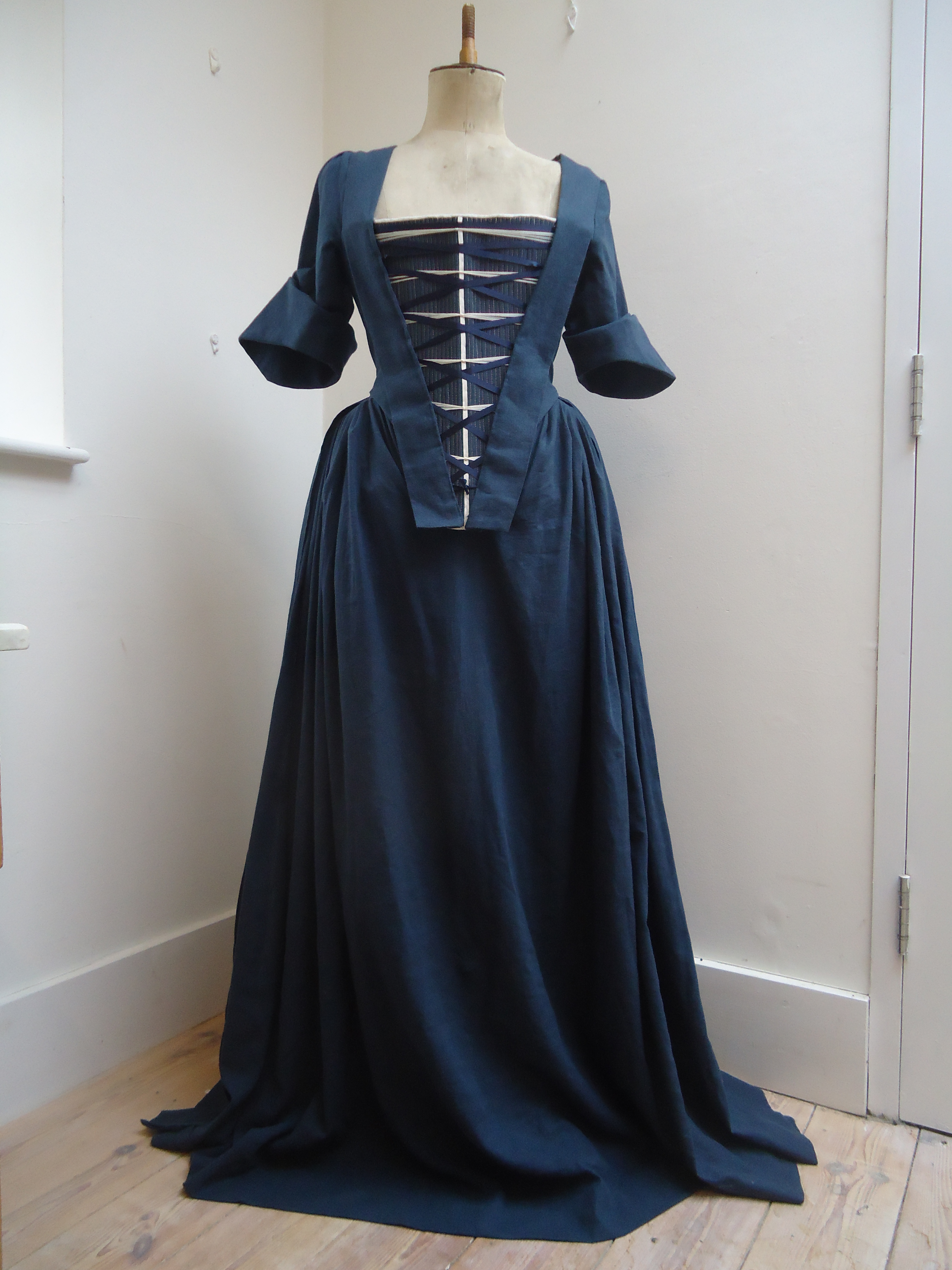The Stomacher Style Stays Debate:
The Stomacher-Style Stays Debate:
We think it's become clear that this topic needs more in-depth research.
So, please consider this little post as the new beginnings of our research!
There seems to be two views on whether the decorated-front Stays that we find in our museums were actually worn to be seen. For example, the lady that helped us at our Study Session at the Edinburgh Collections Centre said that in her opinion they were not worn to be seen - like our modern day decorated Bra's with their lace covered colours and central bows - they were just private prettiness for the individual.
Trying to dress the mannequin with the Stays to be seen, certainly throws up MANY problems. It seems nigh-on impossible, infact, if certain techniques weren't used - and there doesn't appear to be any evidence they were. Some of the techniques that we had to adopt in order for our dress to work were 1) CF slits on the skirts for the front points to overlap over. And 2) A hook sewn on the Stays at the waist point on which would tie the various undergarments. (please see our 'Stomacher Style Stays Problem' post) This could lead us to the conclusion that perhaps they weren't worn to be seen.
However, we've just been re-reading the 'Handbook of English Costume in the 18th Century' by C.W Cunnington and P.Cunnington and we came across this little statement.
" The Corset:
This laced behind and with a plain or embroidered front acted as a stomacher.
'The Stays were white silk covered with a lacing through which a handkerchief was passed,' 1739 Mrs Delaney's Autobiography."
We wonder if they tried dressing a mannequin as they described the Stays being worn here though....
I know that many Historians now find faults with some of the Cunningtons findings in this more modern-day light, but it is their gathering of costumes and research that bulks out the collection stored in the Gallery of English Costume in Manchester. They weren't just stating their facts from some holed-up office having never seen a garment, but were avidly collecting and researching and making sense of what they found as they could understand it.
When we made our Philadelphia Stays, we also sampled along side it a Robe a
 l'Anglais with Robings designed to come to the edge of the stays. In doing this we un-earthed a whole MASSIVE amount of problems. We emailed some of the museums to find out how they dealt with the problems (see our Post ' The Stomacher Stays Problem'). It was the Manchester Galleries that contacted us back and said that they didn't know how they were worn and had the same problems when dressing one of the stays in their collection.
l'Anglais with Robings designed to come to the edge of the stays. In doing this we un-earthed a whole MASSIVE amount of problems. We emailed some of the museums to find out how they dealt with the problems (see our Post ' The Stomacher Stays Problem'). It was the Manchester Galleries that contacted us back and said that they didn't know how they were worn and had the same problems when dressing one of the stays in their collection.
The quote that the Cunnington's use to support their statement that they were used as 'Stomachers' is an important one. Mrs Delaney here writes that the white silk stays were covered with a lacing through which a neck cloth (in those days referred to as a Handkerchief) was tucked. This act of tucking the handkerchief through the lacing is physically impossible if the Stays weren't displaying this CF lacing to the outside world.
Buckles for her Stays:
This tiny insert into their book about Stays acting as Stomachers has also re-opened for us what we were always confused about. There was an item of jewellery called ' a buckle for the Stays'. (Never 'Stays Buckle' but 'Buckle for the Stays', which seems a mouthful but there you are!) It seems to have been a buckle that went over the front of the stays, between the robings of the dress, and was used to tuck the handkerchief in to if there was no CF lacing. At first we just asked 'How did it clip on' but then we began to wonder how it was even seen and used if the Stays were never seen. We can show you no photos for this as we have never seen one!
So, consider this the start of more research...

No comments:
Post a Comment